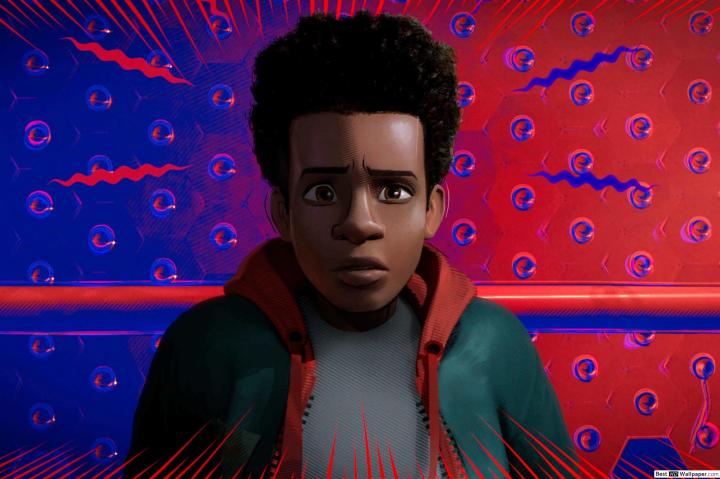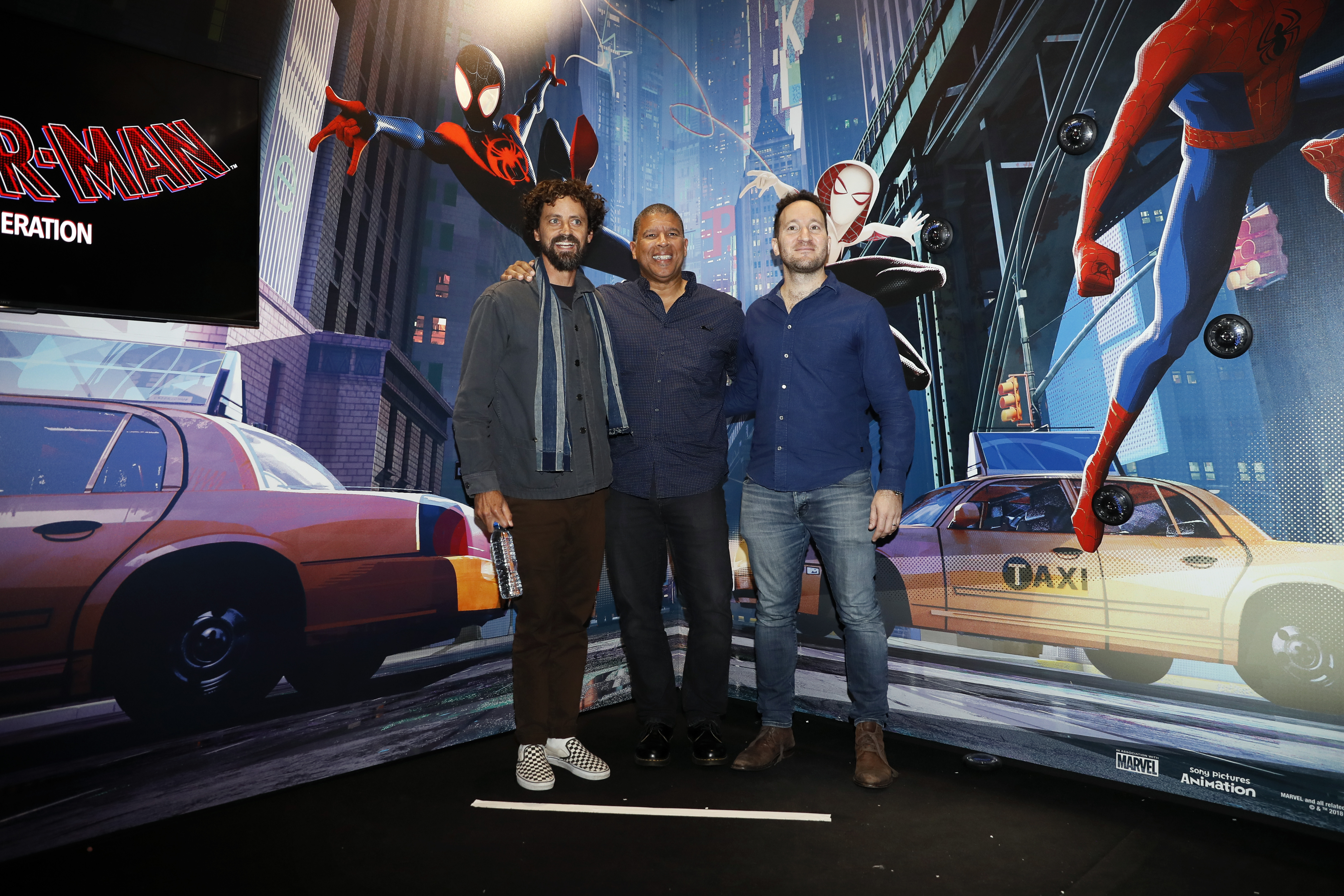Maverick Life
Animated antics: Peter Ramsey, Miles Morales and the dawning of a new age for superheroes of colour

On a fine weekend in March, the eighth edition of the Cape Town International Animation Festival took place at The River Club in Observatory. Though the festival has been growing steadily since its inception in 2010, the event has primarily served insiders: professionals, artists, software vendors, students and self-confessed geeks. Up till now.
2019’s Cape Town International Animation Festival had all the hallmarks of a watershed event: The River Club, the festival’s starter-home, was bursting at the seams, and festival director Dianne Makings took evident pride in announcing that tickets had sold out. Next came the exciting news of a partnership with Comic Con from 2020 and a move to a venue with a little more elbow room: Cape Town Stadium.
One speaker, in particular, made this the year in which CTIAF palpably levelled up, flushing a broader audience from their Saturday lie-ins and into a queue that started forming at 7am, and by 10 was rambling down the stairs, along the hall and out onto the golfing green. They were there for Peter Ramsey, one-third of the directing trio behind the Oscar-winning animated blockbuster that put a brand new face behind a very well-worn mask: Spider-Man – Into the Spider-Verse.
The film, created with a novel mix of CGI and 2D artwork, is a departure both for the Spider-Man canon and for Sony Animation (The Emoji Movie, Peter Rabbit), whose last handful of features have been very much in the wacky, breakneck style that has become CGI vernacular.
Spider-Verse is something new, technically and tonally – a brave, playful film that experiments boldly with form while managing to cleave to an emotional through-line of genuine substance. Its source material is Marvel’s Ultimate Marvel imprint, a story universe that departs from the 57-year-running adventures of Peter Parker to introduce a new hero: Miles Morales.
When creative producer duo Phil Lord and Chris Miller turned their attention to their next project, Solo, Sony engaged Bob Persichetti to helm the film and tackle Lord’s brilliant but unwieldy 160-page first draft script. As the scope of the project revealed itself, the directing team grew to include Ramsey, who had first come on as a storyboarder, as well as screenwriter Rodney Rothmann.
Ramsey, a South LA native, began his career in live action, working on iconic titles including Tank Girl, Fight Club and Bram Stoker’s Dracula. His entry into animation and his directorial debut, 2012’s Rise of the Guardians from DreamWorks, made him the first African American director of a big studio animated feature. His presence behind the reins on Spider-Verse has been even more of a landmark – not only because the film won the Academy Award for Best Animated Feature, but because Miles Morales, in case it has passed you by, is himself a person of colour. (Half black and half Latino, to be specific.)
As such, Spider-Verse has followed 2018’s Black Panther in a potent one-two punch that is changing hopes and expectations for the bankability of black superhero characters. Brian Michael Bendis, the character’s originator, has said Miles was inspired by Obama – a poignant example of speculative fiction dreaming smaller than reality.
The success of Black Panther, even in areas such as China where it was feared the idea just wouldn’t fly, was a huge vindication for those who believed superpeople of colour could thrive in the harsh meritocracy of the box office. Netflix’s Luke Cage series prepared the ground (and, as one worthy pointed out in a viral phone video, made life easier for large black men who like to wear hoodies on the subway). But for a black character to take on this mask – in the highly competitive animation market – and scoop up a Golden Globe and an Oscar, is an amazing victory.
From the moment the film opens on young Miles, doodling at his desk, singing along to Post Malone x Swae Lee’s Sunflowers and not quite remembering the words, you realise you’re in for something different – it’s animation, but it’s not going to be zany-yet-adorable. It’s a superhero movie, but it’s not going to be slick and gag-laden. It’s something more intimate. “Being able to recognise yourself in a movie meant for a mass audience, to have that intimate a relationship with a character on screen so quickly, has been a rare experience for black people,” says Ramsey.
A great deal of the fun to be had from the film is its many nods to its own comic book origins, both in the innovative visual direction and in the storyline. In his misadventures through the “multiverse”, the result of a machine that breaks down the barriers between different versions of reality, Miles befriends a grubby, ageing Peter Parker, as well as a variety of other “Spiderpeople” that superfans will recognise from various Marvel deep cuts.
But, as Ramsey emphasised, it was the emotional heart and tone of the script that was the team’s guiding light as the possibilities proliferated. “The thing we had at the very beginning was Phil Lord’s treatment, which captured a really clear unique and fun tone that had a real strong emotional undercurrent. Anyone who has read those first treatments and scripts went ‘Oh my God, if you can capture this tone you’ve really got something.’ So we all knew if we drifted too far from that, we were doing something wrong.”
In anticipation of the numbers Ramsey would draw, the festival had set up an extra room to do a simulcast of the talk, from which the late crowd cheered gamely throughout the sound check. The 700-strong audience listened raptly as Ramsey described the ambitious goals the team set for the project and the many creative hurdles they tackled in order to achieve their vision.
With more and more South African studio work appearing on international platforms and one SA studio, Triggerfish, playing a key role in the production of an Oscar-nominated short (2016’s Revolting Rhymes), the success that Ramsey represents no longer seems so far off. But it was Ramsey’s earlier speaking date, the previous day at Khayelitsha’s Isivivana Centre, that potentially had the bigger impact on audience and speaker alike.
CTIAF has steadily and deliberately been broadening its reach to cater to a racial majority still hugely underrepresented in the animation industry. This year, for the third year running, the festival offered a pro bono satellite programme in Khayelitsha to expose school-goers from underprivileged backgrounds to the art and business of animation and, with any luck, spark a passion.
“Animation is one of those careers that students in this country aren’t encouraged to seek out,” said Makings. “The Isivivana engagement really is our chance to interact with high school students and show them some living examples of people who make a decent living from what they do. This year was particularly meaningful for me as an organiser,” she added. “I’ll never forget the moment when we announced that we had an Oscar-winner in the room and all the kids looked towards the white men present, expecting it to be one of them. When Peter Ramsey got up and took to the stage – the feeling was electric. It’s almost like I could feel their minds change in that instant. It hit me at that moment how absolutely vital representation is, on and off-screen. We talk about it a lot, but that day I really felt it.”

epa07124519 (L-R) US film co-directors Bob Persichetti, Peter Ramsey and Rodney Rothman pose for the photographers during a photocall for the animation movie ‘Spider-Man: Into the Spider-Verse’ organized during the Parisian Comic-con in Paris, France, 27 October 2018. The animated superhero movie is to be released in French theaters on 13 December 2018. EPA-EFE/ETIENNE LAURENT
***
INTERVIEW WITH PETER RAMSEY
JSL: You must be sick of talking about Spider-Man.
PR: I don’t know so much. I’m proud of it. And I totally understand why people would want to hear about it.
JSL: Just to start off on a different foot, let’s talk about you a bit. It seems you’ve only picked great movies. How do you do it?
PR: (Laugh) I’ve worked on a lot of not-so-great ones. But you learn on everything.
JSL: Going through your filmography, it’s an interesting sensibility… there’s some quirky, edgy stuff. What’s your lodestone when choosing projects? What do you ask yourself when trying to decide what to work on?
PR: Interesting you should say that, as the idea of having a choice is very recent! I’ve been really lucky up till now to have worked on projects and with film-makers that were in line with my tastes and what I was interested in: I got to work with Francis Coppola whom I idolised, David Fincher who I was a huge fan of, Ang Lee. It really is just about being prepared for opportunities when they pop up.
JSL: And being multi-skilled, as you’ve worn a lot of different hats.
PR: I guess so. I would say that. A lot of films I worked on, I just needed a job. But I might have met a production designer or a director I liked. A lot of working in film is the relationships with the people you’re working with. That can be as rewarding as the quality of the film itself.
JSL: And judging by who came to South Africa this year, you all know each other and have worked together?
PR: (Shrek producer) Aron Warner was actually the guy who got me into animation. We’ve been friends for a long time.
JSL: And how was that switch? Did you feel like you were suddenly moving in slow motion since animation has such long timeframes?
PR: Absolutely. It’s a huge difference but it’s so much more story-intensive, that it filled the need for me to be more involved with constructing the story. I only got into storyboarding because I wanted to be a director. And that was a pathway to get into the industry and support myself and be involved with filmmaking. I couldn’t afford to make my own films when I got into the industry, we didn’t have digital cameras, iPhones, editing software that you could run on a laptop. It’s a totally different world now. I do think if I had had access to that stuff back then, I might never have ever been a storyboard artist.
JSL: You weren’t one of those kids that just sits and draws?
PR: Oh no I did; I drew all my life. I’ve drawn ever since I could hold a pencil. And interestingly, I was always drawing little stories. But just as a career, the fact that I could draw meant I could earn a living working in the field that I want to work in and get closer to my goal. That was something I enjoyed and could do well, but it was a step on a ladder. Now, the advice I give anyone is if you want to direct movies, just start making them. And you’ll be a bad director for a while, but you’ll be a director! And you’ll get better.
JSL: It’s such an important lesson because for certain types of personalities, if it’s not as good as what you see in your head, you don’t even want to start in case it’s not perfect.
PR: Exactly. And I know that’s what’s held me back in the past, and it’s probably the number one thing that holds people back.
JSL How did you get over it?
PR: I may not totally be over it! But I will say, working on these things you start to realise, nobody gets it right on the first try. It takes trial and error and exploration and an emotional risk on your part to fail in front of other people.
JSL: Do you find animation, being such a collaborative medium, takes the edge off that fear because it’s a bunch of you? Or does it make it worse because you’re kind of a watched pot waiting to boil?
PR: Well that depends on you personally. At this point, and I’d even say when I came into the animation industry myself, I had spent a good 10 years in live action, being part of the process from the earliest days of the film until well into shooting. I got to see these films from a privileged vantage point, and a lot of these things were demystified for me. I got to see how David Fincher looks like a flawless genius because you’re seeing the end result of a lot of head scratching and a lot of collaboration with other people. By the time I came to animation, I didn’t have a lot of fear of not knowing what to do or of being embarrassed about not getting things right on the first try, because I knew these movies, they always get finished. And there’s always someone to help, it’s not all on one person. Not to say that I never had any trepidation. But I was lucky in that way that I had worked at a high enough level that I could take it a little lightly. Everything wasn’t a crushing defeat that went wrong.
JSL: Did you manage to keep that lightness into Spider-Man, where it was not just a new role for you, but everybody’s trying to do something new and break the mould?
PR: Yeah! On Spider-Verse more than anything else I’ve ever done because so much of that movie was iteration upon iteration, and not being precious in the effort to get to the vision we all had for it.
JSL: I had a colleague who said that from the opening scene, he started crying. Because it’s this surprising, soft underbelly of representation. It’s not the grand superhero, it’s just a kid singing to himself, not really knowing the words.
PR: Exactly! Doing something everybody’s done. You recognise yourself. Interestingly, that was not always the way we met Miles. That was not in the first versions of the script.
JSL: From that intimate beginning, there’s a point at which the film becomes more a meditation on form. What were the conversations about holding on to the tone?
PR: One of our biggest fears was that we were going to lose touch with Miles’s story and the emotion of that… At every moment on every level of the process, you have to ask yourself “what story am I trying to tell?” And that can be about a scene, about a shot, a piece of wardrobe, a line of dialogue, someone’s hairdo, if you ever feel unsure stop and go “wait a minute, what story am I trying to tell?”
JSL: How do you handle the pressure of having created this thing that means so much to so many people? I’m sure you’ve noticed it means a lot to us. And has the pressure changed as it gets more successful?
PR: Yeah, I don’t know that there’s any pressure…except on whoever is working on the sequel! Is anyone going to have anything close to the response the first one got?
JSL: So will you be working on the sequel?
PR: I don’t know! We will see. I’d really like to be associated in some way, but nobody really knows anything about the reality of the sequels yet. Honestly, we finished this movie at the end of November, then it was just right onto the train of promotion and awards and screenings, there hasn’t been a single chance to stop, when I fly home from South Africa it will actually be over.
JSL: We hope to see you back here soon.
PR: Me too. I’m really blown away by the spirit of the people here. This animation community seems so supportive and kind. It’s very inspiring. DM
Julia Smuts Louw represents Animation SA, the industry NGO that put on CTIAF every year and is also the host of the Animation SA podcast















 Become an Insider
Become an Insider